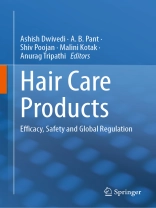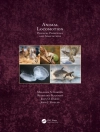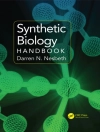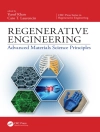The book delves into various aspects of the hair care industry, providing a comprehensive understanding of hair throughout history, its anatomy and physiology, genetics and molecular mechanisms of hair color, and the raw materials used in the industry. It explores the diverse range of hair care products, including oils, dyes, lotions, and serums, and emphasizes the importance of global regulatory approaches to ensure consumer health and safety, particularly in relation to nano-formulations and synthetic hair care products. The book also addresses the safety and efficacy of herbal care products from a global regulatory perspective. Furthermore, it examines the impact of the microbiome on hair care products, highlighting the opportunities and challenges in complying with global regulations. The evaluation of hair care product safety is discussed within a global context, exploring different models and methods. The book also focuses on the journey of hair care products from laboratory testing to market, emphasizing clinical and preclinical assessments in compliance with global regulations. It highlights the role of ex-vivo hair follicle models in ensuring the safety and effectiveness of hair care products while providing a global regulatory framework. Additionally, the book explores the potential of artificial intelligence in predicting hair product toxicity, taking a global perspective. It delves into omics approaches for hair toxicity assessment, discussing current advances and future directions in this field. The next generation of hair products is also explored, with a focus on innovations that prioritize safe and healthy consumer choices. Finally, the book provides an overview of global regulatory frameworks for the hair care industry, including key agencies and guidelines. It serves as a valuable resource for professionals and researchers in the field, offering insights into the historical, scientific, and regulatory aspects of hair care products and their impact on consumer health and safety.
Зміст
Chapter 1_ Editorial: Hair Throughout History: A Timeline of Its Transformative Journey.- Chapter 2_ Anatomy and Physiology Diversity of Hair: A Multidisciplinary Approach to Understanding Structure and Function.- Chapter 3_ The Genetics and Molecular Mechanisms of Hair Color: From Melanocyte Development to Pigment Synthesis.- Chapter 4_ Raw material in the hair care industry and regulation.- Chapter 5_ Hair care products i.e., oils, dyes, lotions, serum etc.- Chapter 6_ Regulatory requirements for the efficacy/ safety assessment of cosmetics/ nano-cosmetics products: Opportunities and challenges for new approach and methodologies.- Chapter 7_ A Global Perspective On Safety And Efficacy Testing Of Hair Care Products.- Chapter 8_ Microbiome and Hair care products: opportunities and challenges.- Chapter 9_ Assessing Hair Care Product Safety and Compliance with Global Regulations through Preclinical and Clinical Models.- Chapter 10_ The Potential of Artificial Intelligence in Hair Product Toxicity Prediction: A Global Perspective.- Chapter 11_ Omics Approaches for the Assessment of Hair Care Products Safety, Efficacy and Toxicity: Current Techniques and Future Advancements.-Chapter 12_ TNext Generation of Hair Products: Innovations for Safe and Healthy Consumer Choices.- Chapter 13_ Global Regulatory Frameworks for Hair Care Industry: An Overview of Key Agencies and Guidelines.- Chapter 14_ Strategic Developments for Pre-clinical Safety/ Efficacy Studies of Hair Care Products.
Про автора
Dr Ashish Dwivedi graduated from CSIR-Indian Institute of Toxicology Research, Lucknow, India, in Phototoxicology. Thereafter, he enriched himself in the same domain of research as Post-Doctoral Fellow at Israel Institute of Technology, Israel, Colorado University, USA, and Banaras Hindu University, Varanasi, India. Based on his outstanding research experience, he got an opportunity to return to his parenteral research organization-CSIR-IITR, where he is currently a Scientist in the Drug & Chemical Toxicology Group. In a decade-long research career, Dr Dwivedi has established himself as one of the pioneers in the area of phototoxicity/photo safety with special reference to the phot-safety of cosmetics ingredients (hair dyes, colorants, preservatives and fragrances), therapeutic agents, nanotized phytochemicals, environmental pollutants, etc. Besides the laboratory work, he has also been involved in fostering contemporary science to Post-Graduate, Ph D students, researchers, and university teachers. Dr Dwivedi’s research efforts have been rewarding in terms of the quantifiable number of research publications in journals of high repute. He has also edited three books for Springer Nature in the area of Photo protection, Skin Aging, and Cosmetics safety and alternative models. He is a member of various scientific societies, including the society of Toxicology, USA, Indian Photobiology Society, India, Society of Toxicology, India, etc.
Professor AB Pant is a seasoned toxicologist with over thirty years of active research career. Presently serving as ‘Senior Principal Scientist at CSIR-Indian Institute of Toxicology Research, Lucknow, and also a ‘Professor’ of the Academy of Scientific & Innovative Research, an Institution of National Importance set up by the Act of Parliament, Government of India. In the scientific fraternity, Professor Pant is renowned for his elegant research on the application of human stem cells and i PSCs in developmental neurotoxicity and for establishing the number of in vitro model systems as an alternative to laboratory animals for biomedical research. He also founded a new discipline of ‘In-Vitro Toxicology’ in the country. He also dedicated himself to fostering contemporary science to Post-Graduate, Ph D students, researchers, and university teachers. He is a lead GLP inspector for the Government of India and also serves as an expert for regulatory bodies, such as BIS, CDSCO, NABL, FSSAI, NGCMA, ICMR, DST, Pharmacovigilance, etc. He has won several awards and honours, including Vigyan Ratna Award-2010 (CST UP); Shakuntala Amir Chand Prize-2007 (ICMR); National Bioscience Award-2012 (DBT); Prof. KT Shetty Memorial Oration Award-2017 (Indian Academy of Neurosciences), Toxicology Promotion Award-2018 (National Academy of Sciences, Allahabad), STOX/ASAW Gold Medal (STOX, India), etc. He has been elected Fellow of the Academy of Toxicological Sciences, USA, Society of Toxicology, India, Indian Academy of Neurosciences, Academy of Sciences for Animal Welfare, India, Academy of Environmental Biology India, etc. In view of outstanding credibility in toxicology, Professor Pant has been included as a global toxicologist in the ‘European and United Kingdom Register of Toxicologists and has also been conferred the DSc (h. c.) degree by HNB Medical Education University, Dehradun, Uttarakhand, India. He currently serves as Chairman and Member of several National and International Committees/ Boards of Government Institutes and Bodies. He also serves as a member of the editorial board of several reputable journals.
Dr Shiv Poojan, Founder & CEO of bio Tox Solutions, is a visionary entrepreneur and academician with over 15 years of experience in scientific research. Prior to Bio Tox, Dr. Shiv held prestigious positions at research institutions worldwide as the Head of R&D at MS Clinical Research Pvt. Ltd, Bangalore (2022-23, as a Scientist at Eliksa Therapeutics, Philadelphia, USA (2021-22), Research Scientist at the Sidney Kimmel Cancer Center, Thomas Jefferson University in USA (2018-2021), and Post Doctoral Fellow at the National Cancer Center in South Korea (2014-2018). He has received his Ph D (Biochemistry) from CSIR-Indian Institute of Toxicology Research, India. He is a leading expert in media formulation and tissue culture, extending the lifespan of 3D cell cultures and ex-plant growth beyond two weeks – a groundbreaking achievement. Dr. Shiv’s expertise extends to drug discovery and development. He has experience in preclinical assessments, developing knock-in/knock-out transgenic mice for cancer research, and creating cell lines for drug testing. His research has been recognized with awards like the Rambhau Kulkerny Best Young Scientist Award from ICAR and the prestigious Carl Storm International Diversity Fellowship. Notably, he was the first in India to establish natural human skin in a lab setting. Dr. Shiv’s unwavering commitment to innovation is evident in his developing unique media compositions for ex-plant cultures, significantly impacting tissue engineering research. His diverse skillset in molecular biology, biochemistry, and omics research makes him a true leader in scientific advancement.
Dr. Malini Kotak is an Associate Scientist in Health and Hygiene segment at ITC Ltd., India’s leading Fast Moving Consumer Goods Company. During her doctoral training at the University of Texas at Arlington and Post-doctoral training at ITC Ltd., she has extensively worked on gut, hand, skin and vaginal microbiomes and their association with human health. She has more than 10 years of work experience in industry and academia and has done cutting-edge research in fields like bio-therapeutics, human microbiome, precision medicine, genomics and cancer biology. She also has extensive experience in research and development in the personal Care Industry. She has published several research papers in reputed journals, book chapters and is a recipient of several research fellowships in India and abroad. Her current research involves the development of novel products which are of relevance in the Health and Hygiene Industry.
Dr Anurag Tripathi is working as Principal Scientist at CSIR-Indian Institute of Toxicology Research. He did his Ph.D from the School of Biotechnology, Banaras Hindu University, on the Immunomodulatory effects of Prolactin and Growth hormone on macrophages. His work contributes to an in-depth understanding of the immunomodulatory, immunosuppressive effects of common food additives, drugs and cosmetic ingredients. He has also worked on the tumorigenic potential of mycotoxins and the molecular mechanisms leading to skin cancer. Dr Tripathi has over sixteen years of research experience and published 50 articles in various peer-reviewed international journals. His publications are well-cited with an H-index of 25. He is a life member of the Indian Nanoscience Society and serves as an editorial board member in several prestigious international journals.












